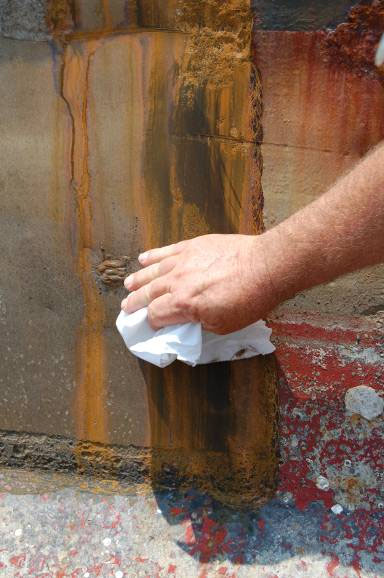I get up at 6:30 A.M. the next morning because Lydia is going to an early meeting with her fellow Rotarian governor nominees and I am attending a special “Tea”. I rise to the fifteenth floor of the West tower and enter a world of white, frilled aprons, perfume, and the chatter of female voices. The lady at the door is looking at invitations. She can’t quite seem to believe that I’m supposed to be here.
There are two hundred tea cups and saucers laid out on decorated tables. I browse through dozens, followed about by a suspicious hostess, finally choosing a cup and saucer which make up an unmatched, but complimentary pair with designs that remind me of Japanese silk print work. I think Katherine will like the delicate flower and geometric motif. Certainly Lydia and I don’t need another cup and saucer. I spend some time chatting with Carol, who is still yawning after our late dinner the night before. Diana Barden comes up to remind me to send her a copy of “Atomic Flea”, a book of my poetry that I have promised to her.
I forget to drink from the decaf coffee pot, so by the time I write this in my journal my hands are shaking. I must remember to go to the House of Friendship room to pick up my Alaskan yo-yo.
That day, at lunch, I hear what I think is an exceptionally good invocation.
“I ask that you appeal to that which makes your life manifest, that this food and all creatures, wherever they may be, be blessed in life and purpose.”
The subject for the luncheon speech is the network of health monitors being set up throughout the world in the wake of the Polio Plus drive. I’m pleased to say that the drive to eradicate this most dreaded disease has succeeded in eliminating polio from most countries on this earth. We still have China, some of Russia, parts of India, and several central African nations to cover.
After such stirring news, I spend the rest of the afternoon recovering from the rich luncheon menu, then attend a reception for Chuck and Marion. There, I run into a man who worked on Bob Boggess’ infrared telescope project in Hawaii. At first he is too busy impressing one of his contractor friends to answer my questions, then he realizes I am a close friend of the man who ran the project and he shifts conversational gears. After that, we talk about the dynamical problem of rotating large domes in freezing, hurricane force winds as if the project were just yesterday instead of (what?) twenty years ago. You have to be careful, Steve. You never know who you’ll run into at these conferences. Now he treats me as if I’m CIA. Actually, until Lydia was nominated and I started meeting all of these people, I never realized how covert I could be.












February 28, 2009
Travel to Anchorage